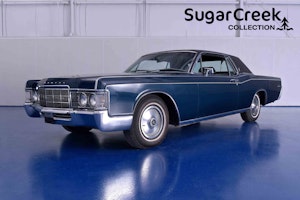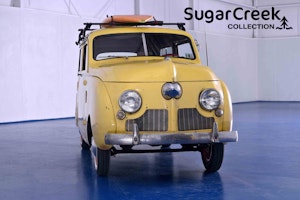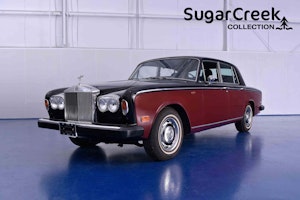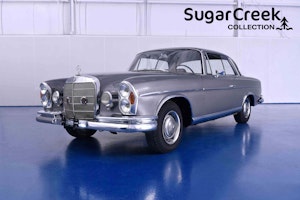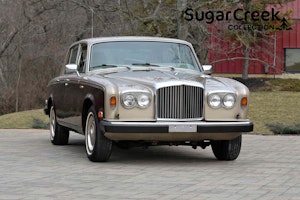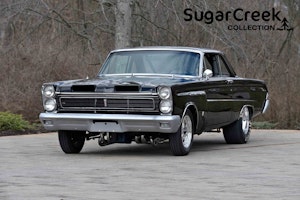Media | Articles
Memories of Altamont’s deadly ends
“These violent delights have violent ends.” If you watched HBO’s Westworld, you recognize the quote—but do you recall the source? It comes from the hasty and secretive wedding of Romeo and Juliet, where Friar Laurence tells the lovers to show some patience in the execution and consummation of their marriage. You know what happens next.
Those words came to mind when I heard that California’s Altamont Raceway Park, dormant since 2008, will be opening once again, this time as a testing facility for autonomous vehicles. Over the years, Altamont was the scene of many violent delights, and a few violent ends—the last of which happened right before my eyes.
It was May 2008, and the “24 Hours of LeMons” series was in the middle of its second season, or maybe the third, depending on what you’d consider a season. Late in 2007, a bunch of my street racer buddies had built up a second-generation Supra, which we’d then used to take Car and Driver’s suspiciously well-prepared RX-7 to the proverbial woodshed at the Flat Rock LeMons race. We won by 53 laps, which sounds like a lot until you realize that Flat Rock’s oval is the size of a McMansion’s dining room.
Based on that remarkably insignificant success and a few seasons’ worth of club-racing podiums, I was invited by a few reprobates from Jalopnik to drive their V-8-powered Volvo at the 2008 Altamont race. I got there a few days early so I could meet the team and see the car, both of which were in considerable disarray by SCCA standards but in fine fettle from a LeMons perspective. The day before the race, my first wife flew in to join us. She was pregnant at the time, and she’d worried about taking the flight from Ohio, but I convinced her that no harm would befall any of us.
Our race was a disaster right from the start. Nobody anticipated just how hot Altamont could be in the spring. It’s located in what amounts to a rock bowl. The hot air just sits there and sautees everyone involved. Add 95 cars running open-pipe exhausts, and you get Los Angeles smog conditions, to put it mildly. In those days, LeMons didn’t mandate much in the way of safety gear. Many of the drivers unzipped their suits to the navel, revealing paunchy and pasty bare chests, then left their Nomex gloves in the pits. The heat was omnipresent, brutal, almost binding. We all began to come apart at the seams, both individually and as a crew.
Marketplace
Buy and sell classics with confidence
Our fueling stops were haphazard, marked by confused shouting and a Brownian motion of feckless, undirected rookies who thought it was a good idea to mill around the car for no reason. The SCCA “shoe” on the team lost his temper in the first stint and bent a tie rod playing bumper cars, putting us out of commission for an hour. When the power-steering belt came off shortly after we returned to racing, the “Jalop” driving it promptly came into the pits and said he couldn’t drive it without power steering. The idea of just dealing with it, of turning the wheel with more force, simply never occurred to him. “It’s hot,” he offered, by way of explanation. I offered my opinion of him as a human being in Technicolor detail, which set the tone for nearly every single one of our future interactions to this day. Meanwhile, I was boiling with frustration at our mutual incompetence. When it was time for me to get in the car, a catty word was said behind my back by the crew chief and I jumped over the trunk with the intention of punching him right in the face, only to be tackled by five people I didn’t know. I’m pretty sure the team was within spitting distance of last place at that point.
Things got better. I made up about 30 places during a stint that ran nearly three hours. The SCCA guy settled down and raised his game. One of the Volvo’s fabricators, a mini-truck enthusiast with zero on-track experience, turned out to be a damn-fine driver with excellent mechanical sympathy. We had the second-fastest lap of the race and were sitting in the top 15 with just a few hours to go.
That’s when the other Volvo in the race, a 242 sedan driven by Court Summerfield, departed the infield “X” at full speed without warning and impacted the ring wall. A thick column of black smoke rose and obscured the old grandstands before collapsing back into the rock bowl to shroud the track and parking lot. The air was thick and blurry. In our trailer, my wife started to cough, first in short bursts then in long, ragged bouts. Shortly afterwards, the emergency-services workers covered the Volvo with a tarpaulin. Sadly, Court was gone. They say it was a medical issue, that he was already unconscious before he hit the wall. I hope they were right.
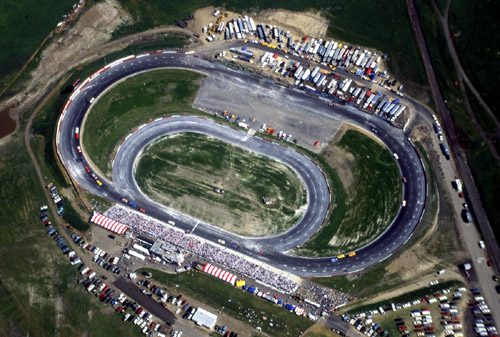
The less said about the next day, the better. We were told that the race would go on. I don’t remember if I drove or not. We didn’t win—I remember that much. Our goodbyes were courteous but not much more. Nobody wanted to talk about the race, or anything else for that matter.
One of my teammates would go on to dominate LeMons for years in a car that was a cross between a Model T and a Caterham Seven. Another became the first of the LeMons “judges.” Yet another joined a big car magazine and started swanning around in borrowed luxury cars. We never got together as a group again. The Volvo was sold and passed through a few different owners. I drove it again at Thunderhill seven years later and found it to be about the same as it had been in 2008, which is to say a true joy to drive but nothing like a well-sorted and proper racing vehicle.
Four days after my wife and I came home from Altamont, we took a drive through rural Kentucky to visit my brother. She started experiencing serious pain just as the sun started dropping behind the hills. A couple of hours later, she miscarried in the waiting room of a two-bit hospital while the overworked nursing staff dealt with the results of that evening’s fourth or fifth bar fight. A young doctor sashayed over, cast an impassive eye at the two of us, then pointed at the blood-soaked floor and delivered his verdict like you’d mention the sports score of a team you don’t follow: “Yeah… that’s a fetus.”
I never returned to that California oval. Wouldn’t go near the place. Never heard about the track’s closure later in 2008, never heard about the struggles and controversies, the NIMBY crowd in their tract homes who saw nothing wrong with migrating to a place and then demanding that it be changed to suit their ignorant demands, the wanna-bes who no doubt shivered with hipster-ish pride telling people they lived next to Altamont—yes, that Altamont, the Gimme Shelter Altamont—even as they fought tooth and nail in court to keep the track silent and empty.
My son was born 11 months after I took my last flag of the weekend in that Volvo. His mother and I were in a hurry to fix the consequences of my mistake, and he was in an even bigger hurry to make his premature debut. Most weekends you will find us at a BMX track or a kart track somewhere around Ohio, cheerful if not always content in this Midwestern deciduous jumble. I don’t think too much about what might have been.
I do think about Court sometimes. If I had to choose the moment and nature of my death, it wouldn’t be so different from his. Why die on a toilet, or in a hospital bed, when you can die in a race car, even a relatively modest one? Then I see my son’s kart zip by on the front straight, bending millimeter-perfect into the next turn on the fingertip reflexes of someone who grew up with a steering wheel in his hands and no idea whatsoever that you could wind up spending your last breath crushed against one, and I lose the moronic courage of my McQueen-esque conviction.
This is the truth, when I think about it: Not yet. Not for me. And never for my son. I don’t want to die in a race car. I want to stick around. So give us this time, O Lord. Allow my son to experience these violent delights without those violent ends. May we never find ourselves in a time or place like that day at Altamont Raceway Park. Watch over him long after I am gone, each and every time he puts on a helmet and pulls out of pit lane, forever and ever, Amen.

